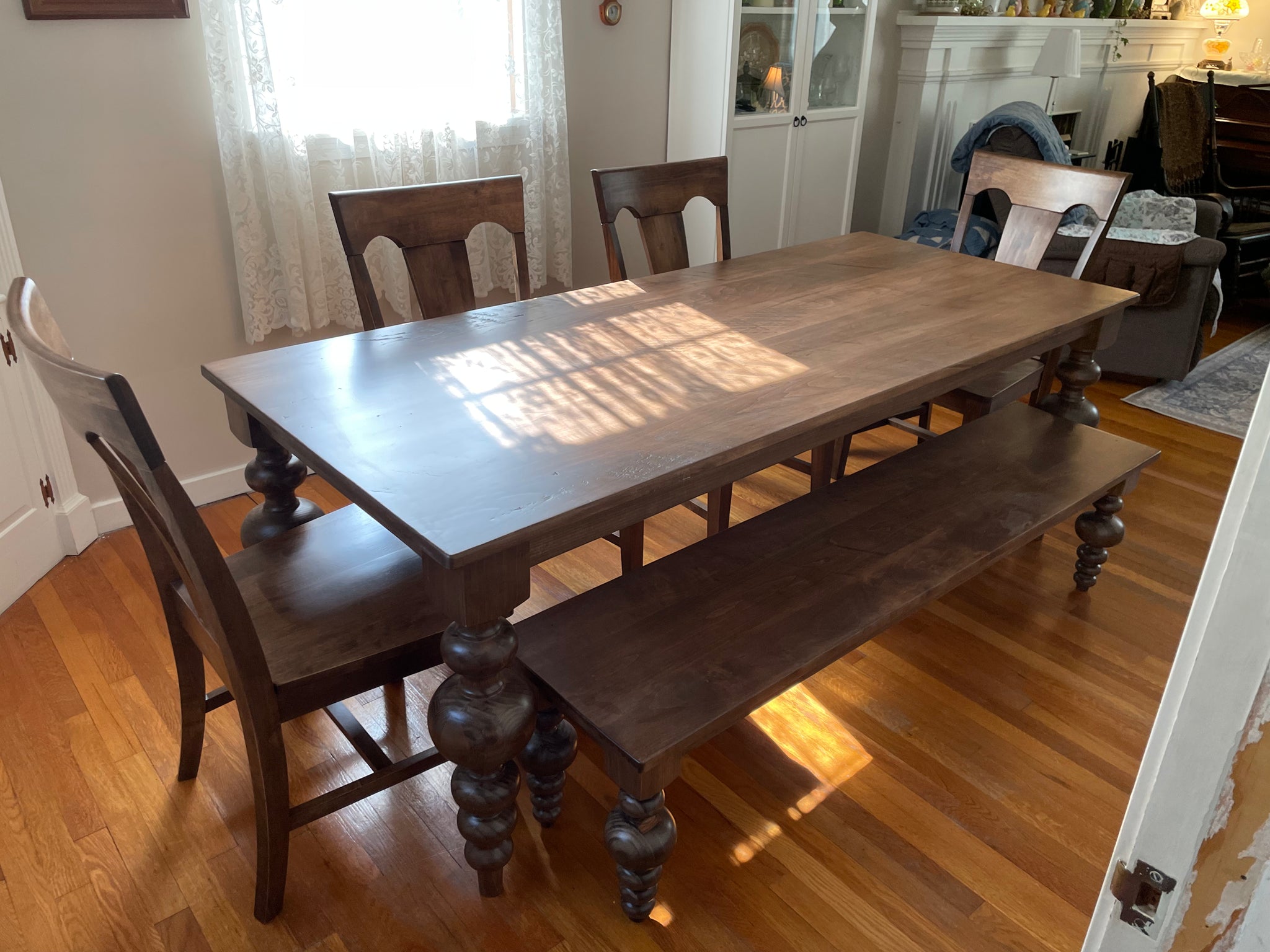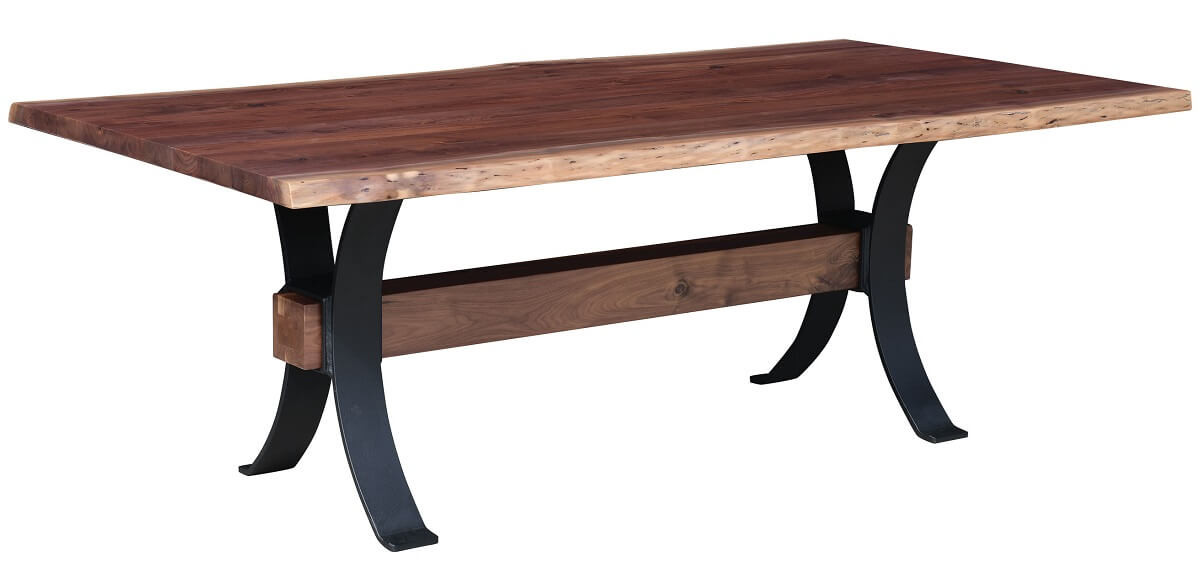Professional Tips for Installing Dining-room Table Legs for Maximum Security
When it involves mounting dining-room table legs, achieving optimum security is critical for both functionality and appearances. The process starts with selecting the ideal products and equipment, complied with by careful positioning and factor to consider of weight circulation. Each step plays a vital duty in making certain that the completed item holds up against day-to-day usage without endangering safety and security or design honesty. Recognizing the nuances of these elements can considerably influence the total end result. What certain strategies can enhance stability even further?
Choose the Right Legs
When picking the ideal legs for your dining area table, it is necessary to consider both performance and looks. The legs you choose will significantly affect the total design and stability of the table. First, assess the table's intended use; if you anticipate regular gatherings, sturdier legs, such as those made from solid timber or steel, may be preferable, as they use increased toughness and assistance.
Following, think about the elevation and style of the legs in connection with the tabletop. Standard table commonly vary from 28 to 30 inches in height, so guarantee the legs line up with this standard for comfort. The design of the legs need to match the layout of the table top-- whether it be modern-day, rustic, or traditional. For circumstances, tapered legs can include a modern touch, while turned legs may communicate a much more timeless aesthetic.

Select Appropriate Equipment
How can the appropriate hardware boost the stability and durability of your dining-room table? The selection of proper equipment is important to ensuring that the legs of your table are securely connected and able to withstand normal usage. Top notch screws, screws, and brackets supply the required toughness to sustain the weight of the table, along with any type of added tons put upon it throughout dishes or gatherings.
When choosing screws, choose those made from resilient products such as stainless steel or brass, which withstand deterioration and maintain honesty in time. The length of the screws is similarly important; they must penetrate deeply into the table's structure without compromising stability. For bolted connections, take into consideration using lock washers to avoid loosening up because of resonance or motion.
In addition, using edge braces can add extra support, particularly for larger tables or those with heavier tops. These brackets distribute weight equally and assist preserve the table's form. Making sure that the equipment you pick is ideal for the particular materials of your table will certainly additionally enhance its general stability and long life, allowing you to appreciate your dining experience for years ahead.
Ensure Correct Positioning
Proper alignment of dining space table legs is crucial for both aesthetic charm and practical stability. Misaligned legs can lead to an unequal tabletop, which may not just be visually unattractive but also endanger the table's usability. To accomplish optimum placement, begin by gauging the distance from the table's edges to the leg accessory factors. This makes sure that each leg is positioned equidistant from the sides, creating a balanced appearance.
Use a degree during installment to verify that each leg is vertical to the tabletop. It is a good idea to note the wanted leg settings on the bottom of the table with a pencil or masking tape prior to protecting them.
In addition, verify the positioning after the first screws are tightened up, as modifications might be needed prior to fully safeguarding the hardware. click site By focusing on correct placement, you not only boost the table's general design yet also make certain that it stays practical and secure for many years to come.

Consider Weight Circulation
After guaranteeing proper positioning of the dining-room table legs, it's vital to think about weight distribution to improve security and performance. dining room table legs. Appropriate weight distribution is vital in avoiding making sure and tottering that the table can sustain its intended load without threat of tipping or breaking down
When positioning the legs, ensure they are placed at equivalent distances from the facility of the table to equally disperse the weight throughout the structure. Think about the weight of the table top and any kind of products that will often hinge on it, such as attractive pieces or tabletop devices. Tables with larger surfaces ought to preferably have legs located closer to the edges, as this makes best use of the base of assistance and minimizes the threat of instability.
Furthermore, if the table is meant for use in a high-traffic location, think about utilizing heavier materials for the legs or adding maintaining elements, such as cross-bracing or a reduced rack - dining room table legs. These modifications can help preserve equilibrium and stop shifting throughout usage. Ultimately, a well-considered weight circulation strategy will considerably boost the table's overall efficiency, guaranteeing it remains a practical and eye-catching centerpiece for your eating space
Test Stability Before Usage
Testing the security of the dining-room table prior to usage is a vital step that must not be overlooked. Making sure that the table is stable and protected can prevent crashes and extend the life-span of the furnishings. Begin by applying mild pressure to numerous points on the table surface. Press down on the facility and after that along the edges, observing any wobbling or changing. If the table reveals instability, identify the legs or joints that might need adjustment.
Next, examine that all screws and bolts are tightened up properly. Loose links can bring about instability and possible damage with time. If required, use wood glue on joints to improve stability, making certain to allow sufficient drying time.

Final Thought
In verdict, the installation of dining-room table legs needs cautious factor to consider of products, placement, equipment, and weight circulation to accomplish maximum security. By picking durable legs and premium bolts, making sure exact positioning, and dispersing weight evenly, the structural honesty of the table can be dramatically improved. Conducting a stability test prior to normal usage additionally makes sure that the table will hold up against everyday pressures, therefore supplying a reputable and safe dining experience.
When it comes to installing eating room table legs, attaining optimum stability is paramount for both performance and aesthetics. The legs you pick will considerably impact the overall layout and stability of the table (dining go to this web-site room table legs). Standard dining tables usually range from 28 to 30 inches in elevation, so guarantee the legs align with this criterion for convenience.Proper placement of eating area table legs is essential for both visual charm and useful security.In verdict, the installation of dining room table legs needs cautious factor to consider of materials, weight, placement, and hardware distribution to achieve maximum stability